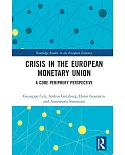The impact of austerity policies across Europe is still being assessed, but it is clear that their gendered impacts have been consistently severe, structural and manifold. They have also
been, until now, under-researched and under-estimated.
This book brings together leading feminist economists in the area of gender and austerity economics to perform rigorous gender-impact analysis both at EU and country level. The chapters not
only shed new light on the gendered impact of austerity policies, but also demonstrate that an alternative to continued austerity is not only possible, but necessary. The book offers concrete
suggestions for alternative policies, presenting the framework for a future whereby expansionary fiscal policies and investment in physical infrastructure is complemented by investment in
social infrastructure and the care economy.





















